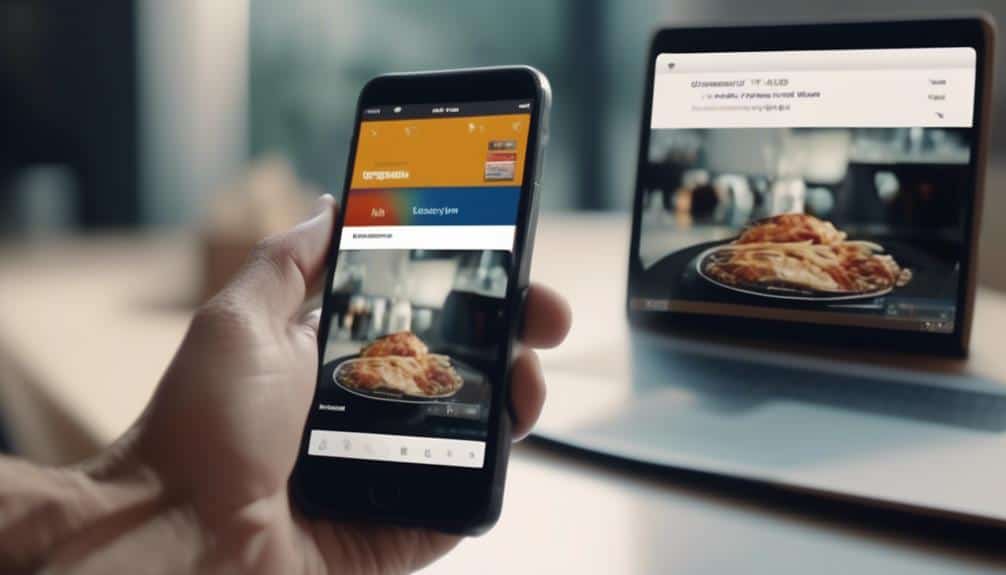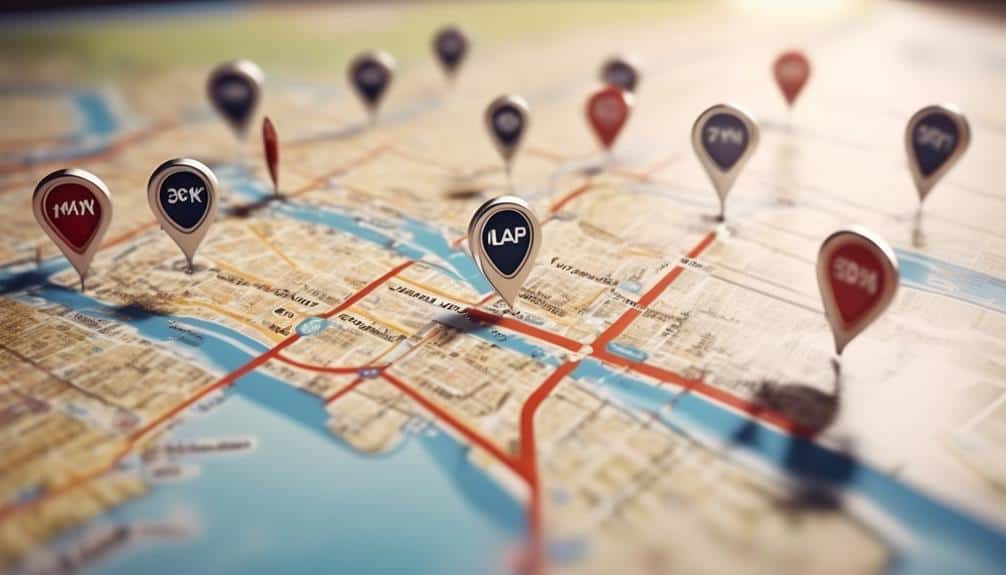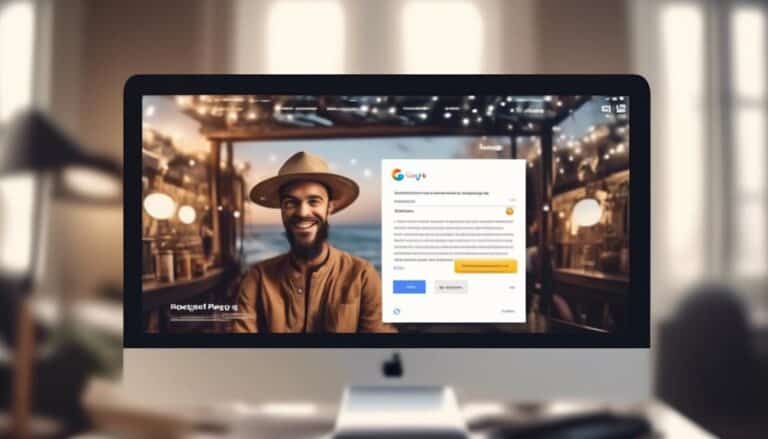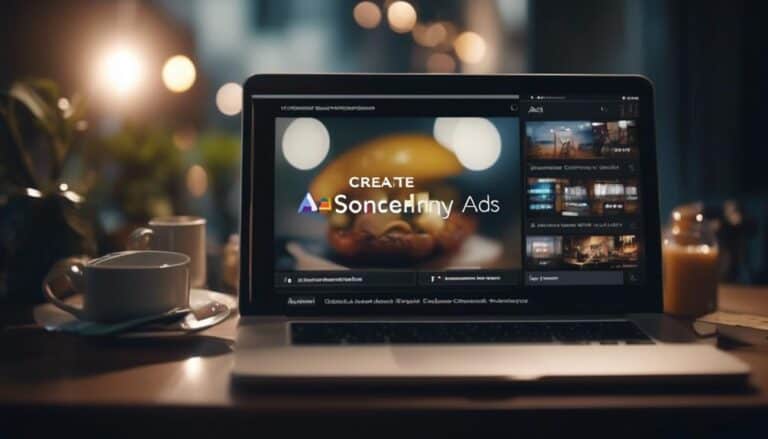The Future of PPC: Trends and Predictions in Pay-Per-Click Advertising
As AI and machine learning continue to shape the digital landscape, the future of PPC is poised for significant transformations. Imagine a world where voice search, video ads, and mobile-first strategies redefine the way we approach pay-per-click advertising.
The evolution of hyper-local targeting, personalized ad campaigns, and the integration of automation tools are just the beginning. With social media PPC evolving and data privacy regulations influencing the industry, the horizon of PPC holds a myriad of trends and predictions that could revolutionize how businesses connect with their target audiences.
Key Takeaways
- AI and machine learning integration is essential for optimizing PPC campaigns and enhancing targeting precision.
- Voice search optimization is crucial for boosting performance and visibility in PPC by tailoring campaigns to conversational queries and long-tail keywords.
- Mobile-first PPC strategies are imperative for maximizing reach and engagement by prioritizing mobile optimization and tailored audience targeting.
- Automation tools streamline processes, provide real-time performance metrics, and forecast trends for campaign optimization, ensuring efficiency in PPC campaigns.
AI and Machine Learning Integration

To propel your PPC campaigns into the future, integrating AI and machine learning is essential for optimizing performance and maximizing ROI. AI-powered optimization leverages machine learning algorithms to analyze vast amounts of data quickly and efficiently. By implementing AI in your PPC strategy, you can enhance targeting precision, ad relevance, and conversion rates.
Machine learning algorithms enable real-time adjustments to bidding strategies, ad copy, and targeting parameters based on user behavior and trends. This dynamic approach ensures that your campaigns are continuously optimized for maximum impact. Through predictive analytics and pattern recognition, AI can uncover valuable insights that human analysis may overlook.
Furthermore, AI-powered tools can automate routine tasks, freeing up time for strategic planning and creative development. By leveraging AI and machine learning in your PPC campaigns, you position yourself at the forefront of digital advertising innovation. Embracing these technologies won't only streamline your processes but also drive better results and ROI.
Voice Search Impact on PPC
By harnessing the power of AI and machine learning for your PPC campaigns, you can now explore the profound impact that voice search is having on digital advertising strategies. Voice search optimization is becoming increasingly crucial in the realm of PPC. With the rise of voice assistants like Siri, Alexa, and Google Assistant, voice search trends are shaping the way consumers interact with brands online. To stay ahead in the advertising game, incorporating voice search into your advertising strategies is paramount.
Understanding the nuances of how people phrase voice searches can give you a competitive edge. Tailoring your PPC campaigns to align with these conversational queries can significantly boost your ad performance. Utilizing long-tail keywords that mimic natural language patterns can enhance your visibility in voice search results. Moreover, optimizing your ad copy to answer common voice search queries can increase your chances of appearing in voice search results.
Video Ads Dominance in PPC

Video ads have emerged as a dominant force in the realm of PPC, revolutionizing the way brands engage with their target audiences online. Brands are leveraging video ads to create interactive engagement opportunities, allowing users to immerse themselves in the brand experience actively. Through compelling visuals and narratives, video ads enable brands to convey their message effectively, fostering a deeper connection with consumers. The rise of video ads signifies a shift towards more dynamic and engaging advertising strategies that resonate with modern audiences.
Emotive Elements of Video Ads Dominance in PPC:
- Emotional Appeal: Video ads tap into viewers' emotions, creating a lasting impact and forging stronger brand-consumer relationships.
- Visual Storytelling: Through brand storytelling in videos, companies can communicate their values and mission in a more engaging and memorable way.
- Call-to-Action Integration: Interactive elements in video ads facilitate direct user engagement, encouraging viewers to take immediate action, such as visiting a website or making a purchase.
Mobile-First PPC Strategies
With the growing dominance of video ads in PPC, mobile-first strategies have become imperative for brands looking to maximize their reach and engagement in the digital landscape. Mobile optimization and responsive design are no longer just options but necessities in today's competitive market. To succeed in PPC advertising, you must ensure that your campaigns are tailored for mobile users. This means creating ads that are visually appealing, load quickly, and provide a seamless user experience across various devices.
Mobile optimization involves more than just scaling down desktop ads; it requires a deep understanding of how users interact with mobile devices and what drives their behavior. Responsive design plays a crucial role in adapting your ads to different screen sizes, ensuring they look and perform optimally on smartphones and tablets. By prioritizing mobile-first PPC strategies, you can tap into the massive audience using mobile devices and stay ahead of the curve in the ever-evolving world of digital advertising.
Hyper-Local Targeting Advancements

As the landscape of PPC evolves, hyper-local targeting is becoming increasingly sophisticated. Geotargeting precision enhancements allow for more accurate location-based advertising.
Leveraging localized ad personalization can significantly boost engagement and conversion rates in your campaigns.
Geotargeting Precision Enhancements
How can businesses leverage geotargeting precision enhancements to achieve hyper-local targeting advancements in their PPC campaigns effectively? Enhanced geotargeting and location-based precision are key components for future PPC success.
Here are three ways businesses can optimize their strategies:
- Utilize Real-Time Data: Incorporate real-time location data to tailor ad content based on a user's exact whereabouts, increasing relevancy and engagement.
- Implement Geofencing: Set up virtual boundaries around specific locations to trigger targeted ads when potential customers enter predefined areas, maximizing conversion opportunities.
- Geo-Conquesting Tactics: Target competitor locations by offering promotions or incentives to users within those areas, enticing them to choose your business instead.
Localized Ad Personalization
To amplify the impact of geotargeting precision enhancements in your PPC campaigns, integrating localized ad personalization is a strategic move towards achieving hyper-local targeting advancements. By leveraging AI-driven customization and location-based targeting, you can tailor your ads to specific regions, increasing relevance and engagement. This level of personalization allows for more effective communication with your target audience, leading to higher conversion rates and ROI. Implementing dynamic ad content based on the user's location enhances user experience and boosts ad performance. Embracing hyper-local targeting advancements through localized ad personalization not only improves campaign efficiency but also demonstrates a deep understanding of your audience's preferences and behaviors. Stay ahead of the curve by embracing these innovative strategies in your PPC campaigns.
| AI-Driven Customization | Location-Based Targeting | Hyper-Local Targeting Advancements |
|---|---|---|
| Tailor ads with AI | Target users by location | Improve relevance and engagement |
| Enhance user experience | Increase ad performance | Boost campaign efficiency |
| Drive higher conversion rates | Understand audience preferences | Achieve hyper-local precision |
Personalization in Ad Campaigns
When it comes to personalization in ad campaigns, dynamic ad content and tailored audience targeting are key components for success.
By creating ads that adapt to individual preferences in real-time, you can engage customers on a deeper level and drive higher conversions.
Leveraging data-driven insights to customize messaging can significantly improve the effectiveness of your PPC campaigns.
Dynamic Ad Content
Incorporating dynamic ad content into your campaigns can significantly enhance engagement and conversion rates. By leveraging interactive ad experiences and AI-powered ad personalization, you can create tailored ads that resonate with your audience on a deeper level.
Utilizing dynamic creative optimization allows for real-time adjustments based on performance data, ensuring your ads remain relevant and effective. Implementing contextual targeting strategies enables you to deliver the right message to the right person at the right time, increasing the likelihood of conversion.
Embracing these innovative approaches to dynamic ad content empowers you to stay ahead in the ever-evolving landscape of pay-per-click advertising.
Tailored Audience Targeting
With tailored audience targeting, maximizing engagement and conversions in ad campaigns becomes a strategic imperative in the realm of pay-per-click advertising.
By leveraging customized messaging tailored to specific targeted demographics, advertisers can create hyper-personalized ad experiences that resonate with individual users. This approach allows for a more effective allocation of advertising budgets, ensuring that each interaction is optimized for relevance and impact.
Analyzing data on consumer behavior and preferences enables the identification of key segments for precise targeting, enhancing the overall efficiency of ad campaigns. As the landscape of digital advertising continues to evolve, the ability to deliver tailored messages to the right audience at the right time will be instrumental in driving successful PPC strategies.
Embracing tailored audience targeting isn't just a trend but a necessity for staying ahead in the competitive digital advertising space.
Automation Tools for Efficiency

To enhance the efficiency of your PPC campaigns, consider leveraging advanced automation tools that streamline processes and optimize performance. Automation tools are key to staying ahead in the ever-evolving landscape of pay-per-click advertising.
Here are three compelling reasons why incorporating automation tools can revolutionize your PPC strategy:
- Real-Time Performance Metrics: Automation tools provide real-time data on key performance metrics such as click-through rates, conversions, and cost per acquisition. This instant access to data allows you to make informed decisions quickly, optimizing your campaigns for maximum impact.
- Predictive Analysis for Campaign Optimization: By utilizing automation tools with predictive analysis capabilities, you can forecast trends and identify opportunities for campaign optimization before they even occur. This proactive approach ensures that your campaigns are always one step ahead, driving better results.
- Time Efficiency and Scalability: Automation tools save time by automating repetitive tasks like bid management and ad scheduling. This time efficiency enables you to focus on high-level strategic initiatives and scale your campaigns effectively across different platforms.
Incorporating automation tools into your PPC strategy isn't just a trend but a necessity in today's fast-paced digital marketing landscape.
Social Media PPC Evolution
As you navigate the dynamic realm of pay-per-click advertising, the evolution of social media PPC presents a compelling avenue for maximizing your campaign reach and engagement. Social media ad spend has been on the rise, with platforms like Facebook, Instagram, and LinkedIn offering advanced targeting options that allow you to reach your desired audience more effectively. Leveraging influencer partnerships within your social media PPC strategy can further enhance your campaign's performance by tapping into the influencer's engaged following and credibility.
Analyzing the data generated from social media PPC campaigns is crucial for optimizing your ad spend and maximizing ROI. By tracking metrics such as click-through rates, conversion rates, and cost per acquisition, you can fine-tune your campaigns for better results. Additionally, A/B testing different ad creatives, copy variations, and audience segments can provide valuable insights into what resonates best with your target audience.
Embracing these innovative strategies within social media PPC evolution can give your campaigns a competitive edge and drive better outcomes in an ever-changing digital landscape.
Data Privacy Regulations Influence

Data privacy regulations wield a significant influence on the landscape of pay-per-click advertising, shaping how businesses collect and utilize consumer data to inform their marketing strategies. In this era of heightened scrutiny over data privacy, businesses must navigate the evolving regulatory landscape to maintain consumer trust and compliance.
Here are three key ways data privacy regulations are influencing PPC advertising:
- Enhanced Transparency: Regulations like GDPR and CCPA require businesses to be transparent about data collection practices, fostering trust with consumers who are increasingly wary of how their information is used.
- Stricter Data Handling Practices: Adhering to regulations necessitates stricter protocols for handling consumer data, ensuring that businesses prioritize data security and privacy in their PPC campaigns.
- Impact on Targeting Strategies: With limitations on tracking and targeting capabilities, businesses are compelled to innovate and find new ways to reach their target audience effectively while respecting consumer privacy boundaries.
Frequently Asked Questions
How Can AI and Machine Learning Integration Impact the Future of PPC Beyond Just Optimizing Ad Performance?
Incorporate AI automation and machine learning for personalized messaging to transform PPC. By analyzing user behavior, preferences, and trends, you can enhance ad targeting, increase engagement, and drive conversions. Stay ahead in the dynamic realm of digital advertising.
What Are Some Unexpected Ways That Voice Search Could Potentially Revolutionize PPC Advertising Strategies?
Embrace the Voice Search impact on PPC revolution. User intent deciphered through natural language cues can redefine ad targeting. Leverage conversational keywords for tailored ads. Align strategies with evolving search behaviors for competitive advantage.
Are There Any Emerging Trends in Video Ads That Could Potentially Disrupt the Current Landscape of PPC Advertising?
In the realm of PPC advertising, emerging trends like interactive ads and personalized targeting are reshaping the landscape. Augmented reality and virtual experiences hold potential to disrupt traditional strategies by offering immersive and engaging content.
How Can Businesses Leverage Mobile-First PPC Strategies to Stay Ahead of the Competition in an Increasingly Mobile-Centric World?
To gain a competitive advantage in a mobile-centric world, businesses must prioritize mobile optimization for PPC strategies. Leveraging responsive design, fast-loading pages, and location-based targeting can enhance user experience, increase conversions, and stay ahead of the competition.
What Are Some Innovative Ways That Hyper-Local Targeting Advancements Could Be Utilized in PPC Campaigns to Reach Specific Audiences Effectively?
To maximize hyper-local targeting advancements in PPC, implement geo-targeting strategies for precise audience segmentation. Integrate social media for broader reach. Craft personalized messaging based on data-driven targeting to engage specific audiences effectively and drive higher conversion rates.
Conclusion
In conclusion, the future of PPC is shaping up to be a dynamic landscape driven by AI, voice search, video ads, mobile-first strategies, hyper-local targeting, personalization, automation tools, social media evolution, and data privacy regulations.
By staying ahead of these trends and predictions, marketers can optimize their pay-per-click advertising efforts to reach their target audience effectively and efficiently. Embracing these advancements will be key to staying competitive in the ever-evolving world of digital advertising.








